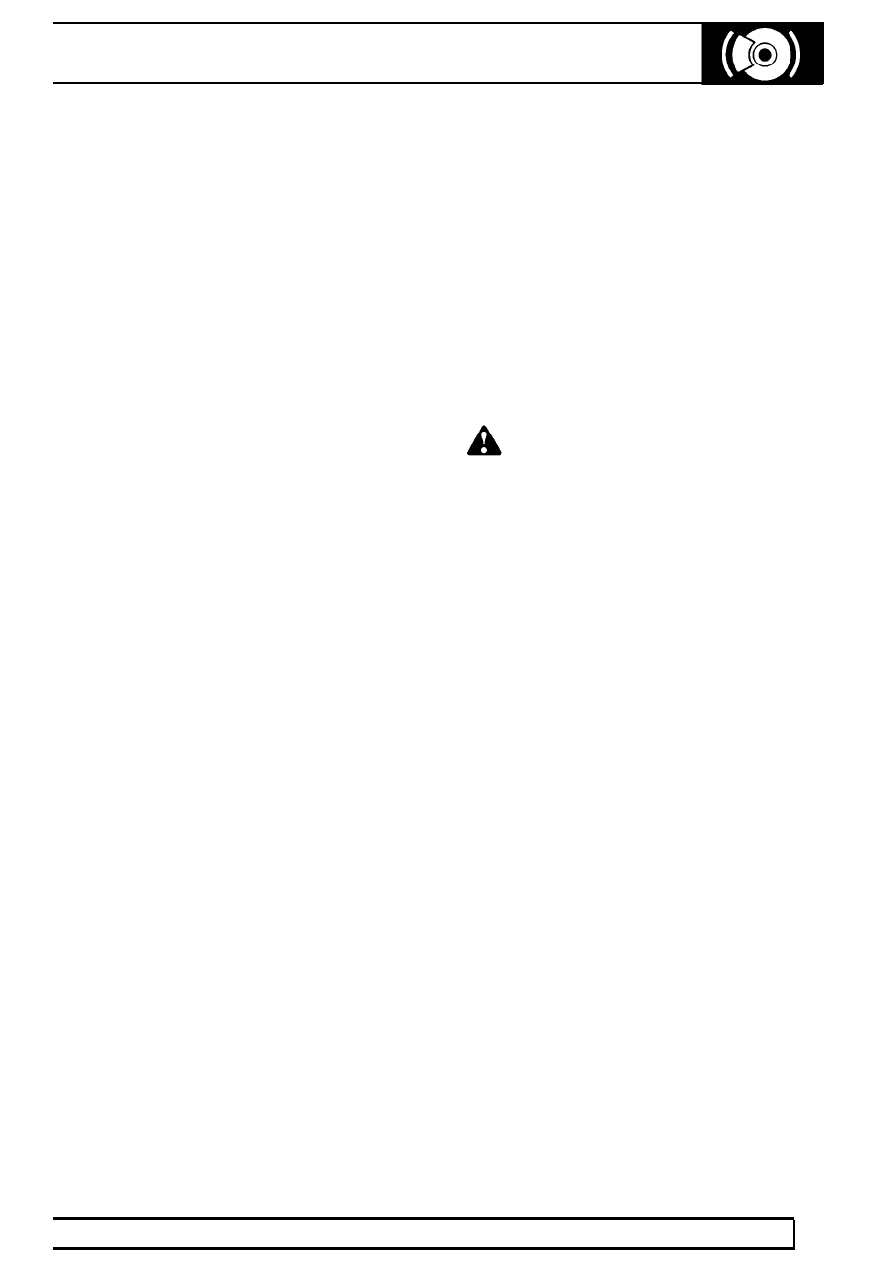Range Rover. Manual - part 198

ABS
7
DESCRIPTION AND OPERATION
Electronic Traction Control (ETC) - Up to 99MY
ETC is an option, available as an extension to ABS.
The system operates on the rear axle only, to prevent
loss of traction where one wheel has more grip than
the other. The system works by applying the brake to
a spinning rear wheel. This transfers torque to the
wheel with grip. By applying the brake, ETC supplies
the torque resistance which the wheel cannot.
An example of when the system would operate is
where one side of the vehicle is on ice, with the other
side on tarmac. ETC will control the spinning rear
wheel.
If both wheels spin the system does not operate, as
braking one wheel will not aid traction.
The system switches itself out at 50 km/h (30 mph). A
vehicle travelling above this speed will not need ETC.
ETC system operation is smooth and continuous and
will not affect the comfort of the vehicle.
ETC is inhibited when the brakes are applied. When
the ETC feature is operating the ’TC’ warning lamp in
the instrument pack will illuminate for a minimum of
two seconds, a single audible warning will sound and
on earlier vehicles ’TRACTION’ will be displayed in
the message centre.
Electronic Traction Control (ETC) - From 99MY
ETC is standard on all models from 99MY onwards.
ETC operates in conjunction with the ABS system to
give improved traction for all wheels where one wheel
has more grip than the other. The system operates by
applying the brake to a spinning wheel. This transfers
torque to the remaining wheels with grip. By applying
the brake, ETC supplies the torque resistance which
the wheel cannot.
An example of when the system would operate is
where one side of the vehicle is on ice, with the other
side on tarmac. The ABS ECU monitors the speed of
the each wheel. If any wheels are rotating faster than
the others, brake pressure is applied to that wheel,
slowing it down to match the other wheel speeds.
If all wheels spin at the same speed the system does
not operate, as braking one wheel will not aid traction.
The system switches itself out at 100 km/h
(62.5 mph). A vehicle travelling above this speed will
not need ETC.
ETC system operation is smooth and continuous and
will not affect the comfort of the vehicle. No driver
intervention is required.
ETC is inhibited when the brakes are applied. When
the ETC feature is operating the ’TC’ warning lamp in
the instrument pack will illuminate for a minimum of
two seconds and a single audible warning will sound.
WARNING: Vehicles from 99MY are fitted
with 4 wheel traction control, which must
be disabled prior to testing on a single
axle dynamometer.
4 Wheel Electronic Traction Control (ETC) Disable
Procedure
1. Switch on ignition.
2. Press brake pedal 10 times within 5 seconds of
switching the ignition on.
3. Check that the traction control light o9n the
instrument panel has stayed on.
4. The message centre will display Traction Failure
and give an audible signal.
5. The traction control will be switched on
automatically when the vehicle reaches 7 km/h.